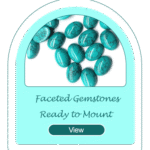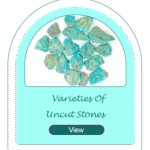Mag
The World of Turquoise Types
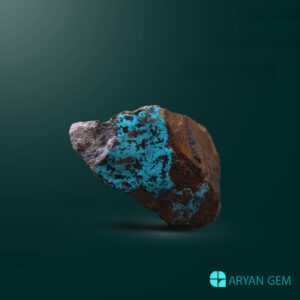
The World of Turquoise Types
The Allure of Turquoise: A Comprehensive Overview (H1)
Turquoise, often referred to as the “stone of the sky,” has captivated civilizations for millennia. Esteemed by ancient Egyptians, utilized extensively by Native American tribes across the American Southwest, and revered in Persian art, its mesmerizing palette of blues and greens holds an undeniable appeal. This semi-precious gemstone, a hydrous phosphate of copper and aluminum, owes its distinct coloration to trace elements present during its formation within arid environments.
The global market for turquoise is vast, driven not just by its beauty, but by geological rarity and historical provenance. Understanding turquoise necessitates recognizing the key differentiating factors that dictate its value: its inherent color saturation, the presence and pattern of its matrix (the host rock remnants), and critically, its mine of origin. Whether sourced from the storied pits of Arizona or the ancient veins of Iran, each type tells a unique geological story.
For a deeper understanding of the mineral structure that grants turquoise its unique properties, one can reference detailed mineralogical data such as its chemical formula: ( \text{CuAl}_6(\text{PO}_4)_4(\text{OH})_8 \cdot 4\text{H}_2\text{O} ).
Understanding Turquoise Quality and Grading (H2)
The perceived value and desirability of any piece of turquoise are determined by a combination of factors assessed during grading. These factors move beyond mere aesthetics to quantify the stone’s natural quality.
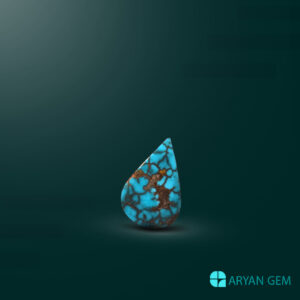
Color Spectrum (H3)
The color of turquoise is perhaps its most immediate draw. The presence of copper typically yields shades of blue, while increased iron content tends to shift the hue toward green.
- Robin’s Egg Blue (Sky Blue): This highly sought-after shade, often associated with Sleeping Beauty or high-grade Iranian stones, represents the purest form with minimal iron or other impurities.
- Green Tones: These stones often originate from areas where iron content is higher, or sometimes due to the presence of zinc. While some green varieties are naturally desirable, intense, dull greens are often valued less than vibrant blues.
- Color Consistency: High-quality stones exhibit uniform color distribution across the entire cabochon, though this is often interrupted pleasingly by a well-defined matrix.
The Matrix (H3)
The matrix refers to the veins or fragments of the host rock—usually limonite, sandstone, or chert—that remain interwoven within the finished turquoise stone. It is not a flaw but rather a signature of natural formation.
- Spiderwebbing: This is arguably the most celebrated matrix pattern. It occurs when the mineralized material infills tiny fissures within the host rock, creating an intricate, interconnected network that resembles a spider’s web. Stones displaying tight, dark spiderwebbing against a bright blue background command premium prices.
- Chunky/Pond Scum Matrix: These patterns feature larger, irregularly shaped inclusions of host rock. While less desirable than clean spiderwebbing, a strong, dark matrix can significantly enhance the visual appeal of a lighter blue stone.
- “Limey” or Plain Matrix: Stones with a very diffuse or light matrix are sometimes deemed “chalky,” which can lower the perceived quality unless the blue color is exceptionally vibrant.
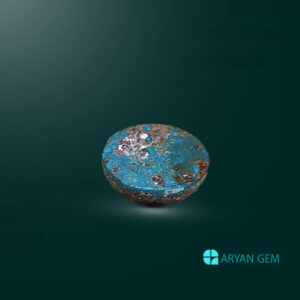
Treatments and Enhancements (H3)
Due to the high demand for flawless, stable stones, the market features various treatments. Transparency regarding these enhancements is crucial for ethical sales and accurate valuation.
- Stabilization: This is the most common treatment. Natural turquoise, especially softer varieties (lower on the Mohs scale, often below 4), can be infused under vacuum pressure with a resin (epoxy or plastic) to harden it, improve polishability, and prevent future color degradation. Stabilized turquoise is often significantly less expensive than natural, untreated stone.
- Dyeing/Color Enhancement: Some low-quality or porous turquoise is treated with dyes to deepen the blue color. This treatment is generally frowned upon and should always be disclosed.
- Imitations: Materials like reconstructed turquoise (powdered stone mixed with binders) or wholly synthetic simulants (such as plastic or dyed howlite) are used to mimic the appearance of genuine stone, often at a fraction of the cost.
Major Types of Turquoise by Geographic Origin (H2)
The origin of turquoise is paramount to its classification and market identity. Specific mines, often now closed, yield stones with uniquely recognizable characteristics that define entire categories of value.
American Turquoise (The Gold Standard) (H3)
The American Southwest—particularly Arizona, Nevada, and New Mexico—has historically produced some of the world’s most prized turquoise varieties, renowned for their hardness and striking color contrast. [Referencing detailed tribal and regional information is essential for consumers interested in American stone origins.](Link Placeholder for American Types/Tribal Info – Use Result 1 URL)
- Bisbee Turquoise: Mined historically near Bisbee, Arizona, these stones are highly prized. They are famous for their intense, deep sky-blue body color contrasted sharply against a heavy, often chocolate-brown or black matrix. Many famous Bisbee stones were cut from the remnants of the Lavender Pit copper mine. [Further reading on the geology and history of mines like the Lavender Pit offers valuable consumer insight.](Link Placeholder for Bisbee/Mine Specific Info – Use Result 4 URL)
- Sleeping Beauty Turquoise: Sourced from the Sleeping Beauty Mine in Arizona, this type set the standard for uniform blue. It is characterized by a consistent, soft robin’s egg blue with little to no matrix whatsoever. Its lack of matrix makes it incredibly versatile for jewelry design, though the mine is now closed, increasing scarcity.
- Kingman Turquoise: Originating from the Kingman complex in Arizona, this turquoise is highly variable. It often exhibits a dark, pronounced matrix, but some veins produce brilliant, clear blues. The quality range is wide, leading to many stones being stabilized.
- Rare, High-Value Examples: Mines like Lander Blue (Nevada, known for incredibly rare, vivid blue with tight spiderwebbing), Number 8 (Nevada, famous for its black spiderweb matrix), and Carico Lake (Nevada, known for distinct greens and blues) represent the apex of scarcity and collector value.
Global Turquoise Sources (H3)
While American stones dominate contemporary high-end jewelry, other global sources offer distinct geological profiles and historical significance. [A general guide helps differentiate global varieties based on appearance.](Link Placeholder for Variety Overview – Use Result 3 URL)
- Chinese Turquoise: Increasingly prevalent in the global market, Chinese turquoise is mined extensively. The quality is highly inconsistent, ranging from chalky green to decent blue. Much of the material, especially the lower-grade or greener varieties, is treated or stabilized before export.
- Iranian (Persian) Turquoise: Historically, stones from the Nishapur mines in Iran were considered the finest in the world, often simply called “Persian Blue.” They are famous for their pure, intense, unparalleled sky-blue hue, often possessing a matrix that is either entirely absent or a very subtle, light brown/yellowish shade, setting the benchmark against which other blues are measured.
- Other Sources: The oldest known turquoise deposits are found in the Sinai Peninsula, Egypt, often characterized by a distinct green hue. Turquoise is also mined in Mexico, particularly in Sonora, and in Australia, though these sources typically supply smaller quantities to the international market.
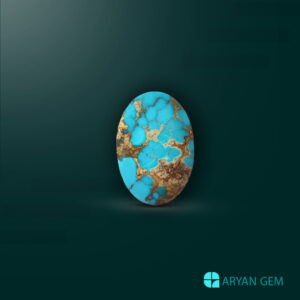
SEO and Market Value Considerations (H2)
For consumers and jewelers alike, the market value of turquoise is a complex equation where geology meets rarity. A high-value stone must successfully align several criteria.
Key Takeaway: The ultimate value of a turquoise cabochon is driven by a synergy of factors: Color Saturation (vividness), Matrix Quality (spiderwebbing desirability), Mine Origin (provenance adds inherent value), and Rarity (closed or low-yield mines command higher prices). A stone labeled simply “Turquoise” carries far less inherent value than one explicitly identified as “Natural, Untreated Sleeping Beauty Blue.”
For those investing in fine jewelry, understanding how to maintain the stone’s appearance is vital. Natural turquoise, due to its porous nature, can easily absorb oils, sweat, and chemicals, leading to discoloration. [Guidance on proper care and cleaning ensures the longevity of the gem’s beauty.](Link Placeholder for Gemstone Care – Use Result 2 URL)
Cherishing the Stone of the Sky (H2)
The world of turquoise is one of immense diversity, reflecting the dramatic geological processes of arid regions across the globe. From the pure, uniform blues of Sleeping Beauty to the complex, matrix-laced canvases of Bisbee, each variety offers a unique connection to the earth. As the industry continually navigates treatments and synthetic materials, education regarding origin and stability becomes the most valuable tool for any collector or enthusiast. When seeking authenticity and lasting beauty, look for reputable sellers who clearly label the origin and treatment status of their magnificent, sky-colored gems.
External Resource List
- [Link Placeholder for American Types/Tribal Info]
- [Link Placeholder for General Guide/Properties]
- [Link Placeholder for Variety Overview]
- [Link Placeholder for Bisbee/Mine Specific Info]


